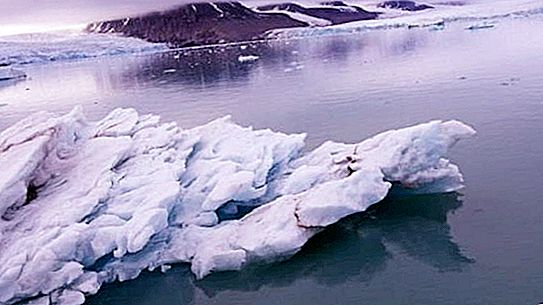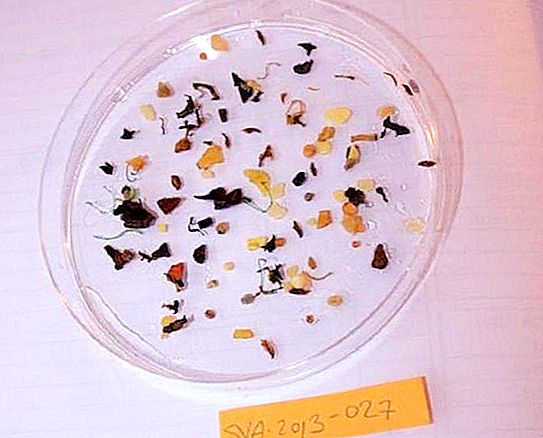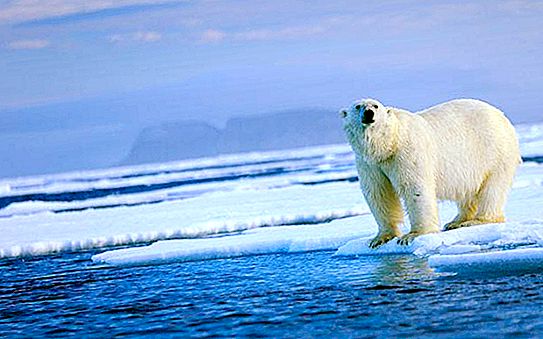Plastic particles found in the arctic zone. This suggests that even people living in the northern latitudes are forced to breathe air, which contains plastic microparticles. However, the effect of these substances on health is still not fully understood.
The Arctic is a region that until recently was considered one of the cleanest in the world. The results of the work of the German-Swiss team are presented in one of the issues of the journal Science Advances.

Also, particles of rubber and synthetic fibers were found in the snow.
Study methods
Scientists took snow samples on Svalbard using a simple, low-tech method - a dessert spatula and a flask. Later, during a more detailed study of the samples taken at the Alfred Wegener Institute in Bremerhaven (Germany), they were able to identify much more harmful particles than originally thought. Some particles were so small that scientists could not determine the nature of their origin. Most of the materials found were of natural origin, such as cellulose or wool. However, there were also particles of plastic, fragments of rubber, paints and varnishes and even artificial fibers. The author of the research, Melanie Bergmann, said the following: “Of course, we assumed that we would find some harmful materials, but the fact that we found so many plastic particles shocked us!” She also added: "We believe that a significant proportion of microplastics comes from the atmosphere."

After 8 years, the woman received a response to her message: the man explained the situation
From old books you can make numbers for a wedding table: step by step instructions
The capital of Indonesia will "move" inland so that it no longer floods

What are plastic microparticles
Studying the potential effects of plastic microparticles on the human body, Dr. Bergmann explains: “We do not know how dangerous plastic is to health. But we should reconsider our relationships and begin to worry more about environmental safety. ” Scientists also studied the snow collected in Germany and Switzerland. Samples showed a higher percentage of content than in the Arctic zone.
How did plastic particles get into the Arctic?
Scientists believe that microplastic particles are transferred using the wind, as well as some other methods that are currently not yet fully understood. Many harmful substances can travel vast distances. In addition, particles of various materials enter the atmosphere through rain or snow. The results of a study published in April by a team of scientists from the UK and France confirmed that microplastics fell from the sky to the Pyrenees. Until recently, they were considered one of the cleanest regions in the world.
“If I managed, everyone will be able to”: Talicia told how she managed to lose 51 kg
The shortest test: ask your interlocutor only 1 question about attitude to othersWoman healed her own mother with her own scarf.

Microplastic particles in other areas
It was previously reported that scientists discovered plastic in precipitation in some other countries, namely: China, Iran and France. With regard to pollution, there are also not fully understood points here. For example, what is the reason for the presence of such an amount of varnish in the Arctic? Researchers suggest that some of the harmful substances got through the ships that passed along the glaciers of the North Pole. But they also suggest that some particles could get into arctic latitudes through windmills. Fragments of fibers could enter through people's clothing. Although there is no reliable information confirming this hypothesis yet.
The opinion of scientists
Dr. Bergmann explains: “There is one important question: how appropriate is it to use plastic packaging, and even in such quantity? Why do we need polymer paints, if you can find analogues that are in no way inferior in quality? Can scientists design other car tires using less hazardous materials? These are very important questions. And our future and the future of the whole planet will depend on how we answer them. ” Dr. Eldborg Sophie Heimstad of a research institute in Norway believes that some harmful particles were of local origin, and some came from far away. She also added: “The main subject of our research is harmful substances that have been transported over great distances. A significant proportion of these chemicals pose a serious threat to all life on the planet."
Environmental threat
According to the results provided by scientists, the highest percentage of plastic particles in the ocean was found in the waters of the Arctic. Plastic garbage also travels hundreds or even thousands of kilometers to subsequently end up in faraway Arctic territories. This is terrible news for everyone who previously considered the Far North to be one of the last untouched and clean areas on Earth.






